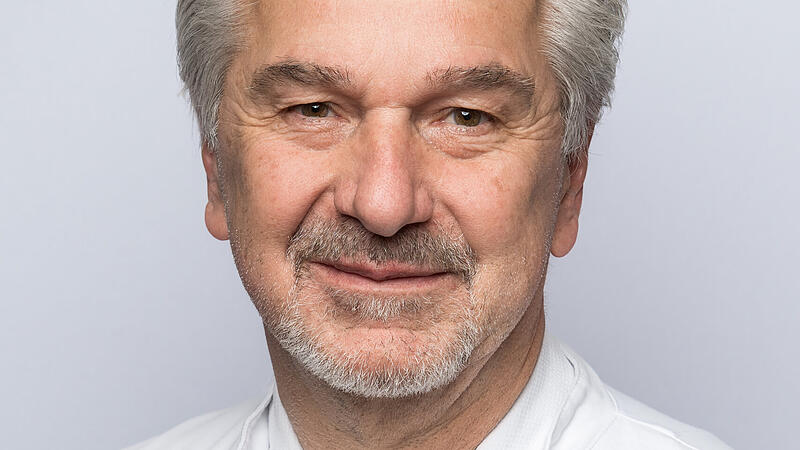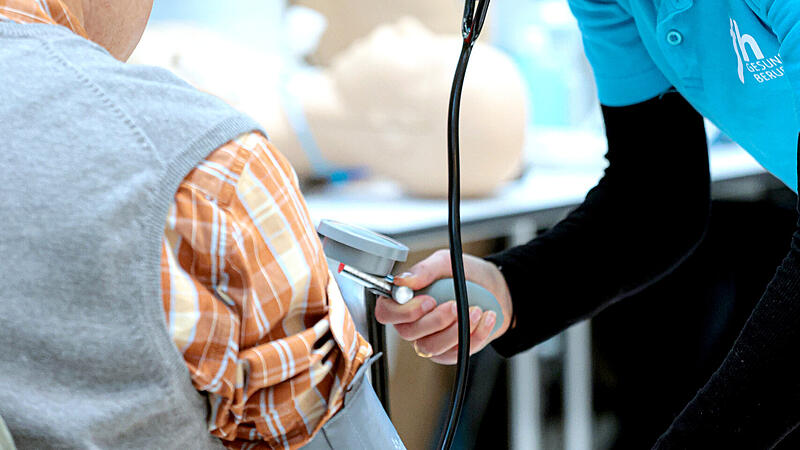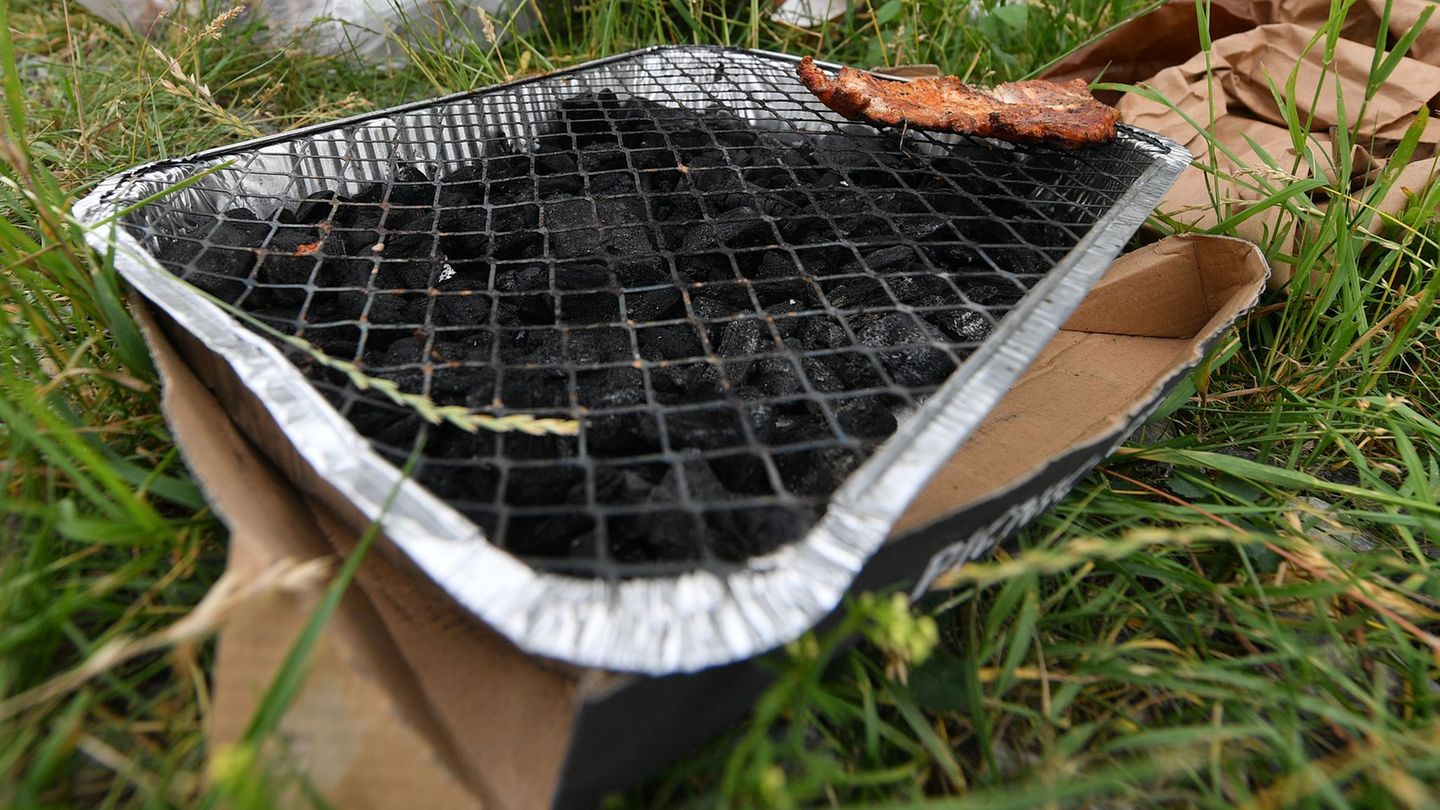Image: VOLKER Weihbold

A “normal” blood pressure is the basis for good health. If it is too high, one speaks of hypertension – and this ranks first among the causes of death worldwide. “A healthy lifestyle protects as well as early detection,” says Primar Norbert Fritsch, medical director and head of the department of internal medicine at the Freistadt Clinic.
How many Austrians suffer from high blood pressure?
Primary Norbert Fritsch: In Austria, every fourth person has high blood pressure – in older people even every second person is affected. In the group of people older than 65 years, 60 to 70 percent already suffer from it.
When do you speak of high blood pressure?
During physical work or sports, our blood pressure has to rise because the body needs this increased pressure. Blood pressure can also rise as a result of acute pain, panic attacks and excitement – but this is by no means high blood pressure. It is important that it decreases during the night hours. This is usually determined with a 24-hour blood pressure measurement, which general practitioners offer or we do in the hospital. (details on the right)
What exactly is measured?
Blood pressure measures the pressure with which our blood flows through the arteries. The heart and the resistance of the arteries and other systems in the body are involved. Vessels are damaged if the pressure is permanently too high.
How do you know that you have high blood pressure – what are the typical symptoms?
Unfortunately, high blood pressure often goes unnoticed for a long time because those affected have no particular symptoms. Restricted resilience due to shortness of breath should be an alarm signal. About 50 percent of strokes and heart attacks could be avoided if high blood pressure were recognized early and treated accordingly. You should definitely go to the doctor if you have tight chests, water retention or reduced performance.
What risk factors are there?
Numerous studies prove what we see in practice every day – an unhealthy lifestyle and a hereditary predisposition already greatly promote high blood pressure. Patients suffering from chronic kidney disease are at increased risk. High blood pressure can also damage the kidneys. Risk factors for high blood pressure are also diabetes or a previous stroke. Medications such as birth control pills can also increase blood pressure.
Are more women or men affected?
In adulthood, it affects men more often than women. A good one in five men aged 40 to 49 has values that are too high. After menopause, women catch up. Because then the blood pressure-lowering hormone estrogen decreases. Two thirds of blood pressure patients over the age of 70 are women. Women often recognize the change more quickly because they are used to rather low blood pressure.
What comorbidities should those affected expect?
If left untreated, permanently elevated blood pressure can have serious consequences that are more diverse than the well-known diseases of the cardiovascular system. There is danger to the heart, brain, aorta and large arteries, as well as to the kidneys and also to the eyes. However, it is not just high blood pressure that increases the risk of a stroke. Risk factors are also the metabolic syndrome, smoking, diabetes, but also age … The combination is sometimes the big problem.
What can patients do themselves?
Move more, eat healthier, reduce obesity and stress. This includes giving up nicotine. Alcohol and salt should only be consumed in moderation.
What does the treatment look like?
Lifestyle adjustments are also necessary when medication has to be taken. The standard is a dual drug combination therapy. We have different options. Depending on the concomitant diseases and side effects, the doctor will select an appropriate therapy. Treatment is often not discontinued.

What does optimal blood pressure look like?
- Optimal: 120/under 80mmHg
- Normal: below 130/below 85 mmHg
- High-Normal: 130-139/85-89mmHg
- Mild hypertension: 140-159/90-99mmHg
- Moderately elevated: 160-179/100-109mmHg
- Heavy Increased: more than 180/more than 110 mmHg
- Medical emergency: If the high blood pressure rises above 230/130 mmHg in a very short time, this is a hypertensive crisis.
Hypertension Symptoms
Typical symptoms, which often become noticeable very gradually, include:
- Headache
- Inner restlessness and nervousness Dizziness
- sleep disorders
- hot flashes
- nausea
- nosebleeds
- potency problems
- reddening of the face
Personal expert tip
Treating and controlling high blood pressure makes sense and increases safety. Waiting is not a good solution. Having no symptoms does not mean that you are safe from risks and complications. “It’s better to take a pill than expose yourself to the risk of a secondary disease,” advises Primar Fritsch.
Source: Nachrichten




